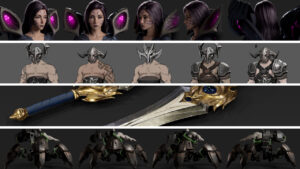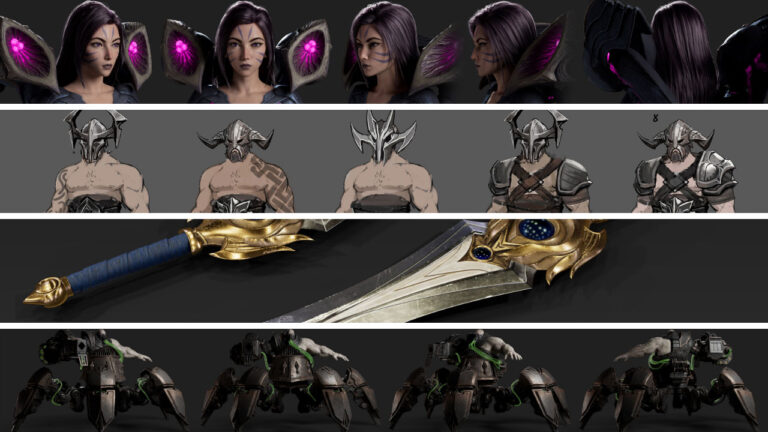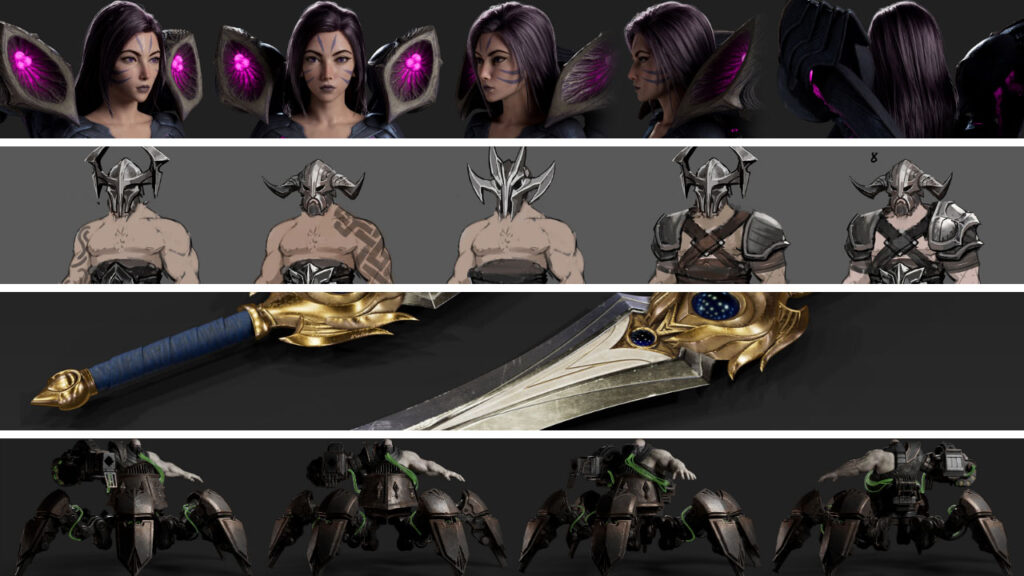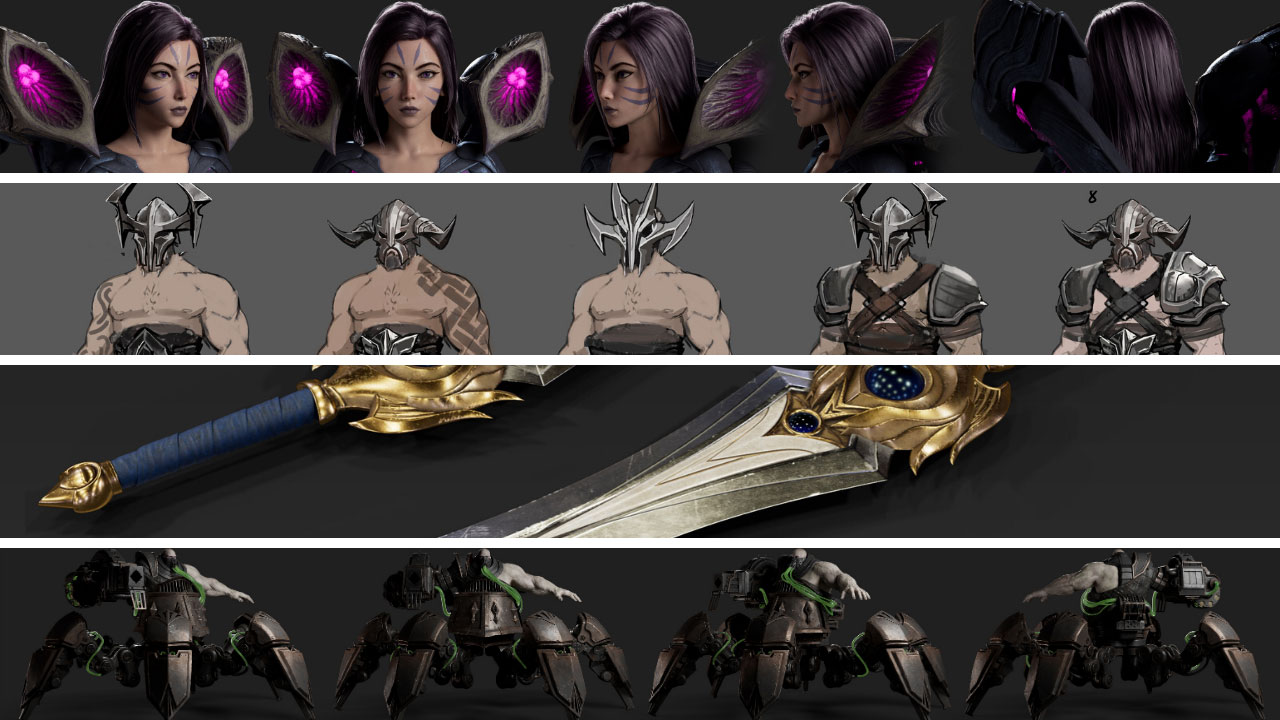More To Read
Immersed in the Rift: The Artistry of League of Legends 3D Models
League of Legends (LoL), developed by Riot Games, stands as one of the most popular and enduring multiplayer online battle arena (MOBA) games globally. Beyond its engaging gameplay, League of Legends boasts a rich visual universe, brought to life by a cadre of talented artists and designers. This article delves into the captivating world of League of Legends 3D models, exploring the artistry, creativity, and technical prowess behind the characters that populate the iconic Summoner’s Rift.
The Evolution of League of Legends 3D Models
Since its inception in 2009, League of Legends has undergone a remarkable evolution in terms of graphics and visual fidelity. The game has transitioned from relatively simple character models to highly detailed, intricately designed champions. Riot Games continually invests in enhancing the visual experience, and this commitment is evident in the evolution of 3D models.
Champion Design: From Pixels to Polygons
Early Days:
In its early years, League of Legends featured champions with simpler models and textures. While these models were charming in their own right, the constraints of technology at the time limited the level of detail that could be achieved.
Modern Era:
Today, League of Legends champions are meticulously crafted with high-polygon models, detailed textures, and intricate animations. From the flowing robes of mage champions like Lux to the imposing armor of tank champions like Garen, each character is a visual masterpiece.
Skins and Customization: Unleashing Creativity
Standard Skins:
League of Legends offers a plethora of skins for each champion, allowing players to customize their favorite characters. Standard skins provide thematic variations without altering the champion’s model significantly.
Legendary and Ultimate Skins:
Some skins transcend the ordinary, evolving champions into entirely new entities. Legendary and Ultimate skins come with unique 3D models, animations, and special effects. Notable examples include “Elementalist Lux” and “Pulsefire Ezreal.”
Visual Effects and Animations: Bringing Abilities to Life
Spell Effects:
The visual effects accompanying champion abilities contribute significantly to the game’s immersive experience. From fiery explosions to icy blasts, spell effects are intricately designed to complement the theme of each champion.
Animations:
Champions move, attack, and cast spells with fluid animations that add personality and uniqueness to each character. These animations are crafted to convey the essence of the champion’s identity and backstory.
The Technical Side of League of Legends 3D Models
Behind the captivating visuals of League of Legends lies a complex technical process. Riot Games utilizes advanced 3D modeling software and animation tools to create champions and their skins. Rigging and skeletal animation techniques enable lifelike movement, while texture mapping and shading bring characters to life in the game engine.
Conclusion
League of Legends 3D models are not just digital representations; they are the embodiment of creative vision, technical expertise, and a commitment to delivering an unparalleled gaming experience. As League of Legends continues to evolve and introduce new champions and skins, players can look forward to exploring an ever-expanding universe of visually stunning and intricately designed characters on the iconic battlegrounds of the Summoner’s Rift.
Exploring the Finest 3D Models: A Showcase of Excellence in Digital Design
In the realm of 3D modeling, artists and designers continuously push the boundaries of creativity and innovation, crafting stunning digital masterpieces that captivate audiences across various industries. From lifelike characters and intricately detailed environments to functional product prototypes, the world of 3D modeling boasts a diverse array of exceptional models. In this article, we’ll delve into some of the best 3D models, showcasing the talent and skill of artists who bring virtual worlds to life.
Character Models: Bringing Imagination to Life
Character modeling is an art form that demands a combination of technical skill and a keen understanding of anatomy, form, and expression. Exceptional character models not only exhibit flawless geometry and texture work but also convey emotion and personality. Some standout examples include:
“Siren” by Hossein Diba:
A mesmerizing digital sculpture that showcases the artist’s mastery of anatomy and attention to detail. The realistic rendering of facial features and flowing hair adds a touch of magic to the character.
“The King” by Daniel Bel:
This regal character model demonstrates a perfect blend of stylized design and meticulous detailing. The use of intricate armor, expressive facial features, and dynamic posing makes “The King” a standout piece.
Architectural Models: Transforming Ideas into Reality
Architectural 3D models play a pivotal role in visualizing and conceptualizing buildings and spaces. The best architectural models not only showcase the design but also simulate real-world lighting and textures. Notable examples include:
“Villa Savoye” by Teruyuki and Yuka:
A faithful digital recreation of Le Corbusier’s iconic modernist masterpiece. The attention to architectural details, lighting, and the surrounding environment makes this model a tribute to the original structure.
“Fantasy Tree House” by Bertrand Benoit:
While not a real architectural project, this whimsical treehouse exemplifies the creative possibilities of 3D modeling in architecture. The intricate detailing and imaginative design showcase the artist’s skill in creating compelling, albeit fictional, spaces.
Product Models: Merging Form and Function
In the realm of product design, 3D modeling is a crucial tool for prototyping and visualization. Exceptional product models go beyond functionality, emphasizing aesthetics and user experience. Noteworthy examples include:
“Nike Air Max” by Hussain Almossawi:
A stunning 3D representation of the iconic Nike Air Max sneaker. The model not only captures the shoe’s design accurately but also highlights its texture, materials, and the interplay of light and shadow.
“Apple Mac Pro” by Vladimir Ogorodnikov:
This product model showcases the sleek and minimalist design of the Apple Mac Pro. The attention to detail in replicating the device’s metallic surfaces, ports, and overall form is a testament to the artist’s precision.
Conclusion
The world of 3D modeling is a testament to the limitless possibilities of digital artistry. Whether it’s bringing characters to life, visualizing architectural wonders, or showcasing product designs, the best 3D models embody a perfect blend of technical skill, creativity, and attention to detail. As technology continues to advance, we can only anticipate even more breathtaking creations that push the boundaries of what’s possible in the realm of digital design.
A Beginner’s Guide to 3D Modeling: Unveiling the Art of Creating Digital Worlds
In the vast realm of digital design and animation, 3D modeling stands out as a powerful and transformative tool. Whether you’re crafting characters for a video game, creating architectural visualizations, or animating scenes for a movie, 3D modeling plays a crucial role in bringing imaginative concepts to life. This article will serve as a beginner’s guide to 3D modeling, exploring the fundamentals, techniques, and the exciting possibilities it opens up for creative minds.
Understanding 3D Modeling
3D modeling is the process of creating a three-dimensional representation of an object or scene using specialized software. Unlike 2D design, which is limited to height and width, 3D modeling adds depth to the equation, allowing for a more realistic and immersive experience. The primary goal of 3D modeling is to generate a virtual object that can be manipulated and viewed from any angle.
Key Concepts in 3D Modeling
Vertices, Edges, and Faces:
Vertices (or Points): These are the individual points in 3D space that define the shape of an object.
Edges: Lines connecting vertices, creating the boundaries of the object.
Faces: Planar surfaces formed by connecting three or more vertices, enclosing the object’s volume.
Meshes:
A 3D model is often composed of a mesh, which is a collection of vertices, edges, and faces that define its structure.
Meshes can be categorized as either low-poly (fewer details, suitable for real-time applications like games) or high-poly (more details, suitable for rendering still images or animations).
Texturing and Materials:
Once the basic structure is created, textures and materials are applied to enhance the visual appearance of the model.
Texturing involves adding details like color, patterns, and surface characteristics, while materials dictate how light interacts with the object’s surface.
Lighting and Rendering:
Lighting plays a crucial role in creating realistic 3D scenes. Artists manipulate light sources and shadows to achieve desired effects.
Rendering is the process of generating the final 2D image or animation from the 3D model, taking into account lighting, textures, and camera angles.
Popular 3D Modeling Software
Blender:
An open-source and versatile 3D modeling software suitable for beginners and professionals alike.
Offers a wide range of features, including sculpting, rigging, animation, and simulation.
Autodesk Maya:
Widely used in the entertainment industry for character animation, visual effects, and game design.
Provides powerful tools for modeling, texturing, and animation.
ZBrush:
Specialized in digital sculpting, ZBrush is ideal for creating intricate and highly detailed models.
Widely used in character design and concept art.
3ds Max:
A popular choice for architectural visualization, product design, and game development.
Known for its ease of use and robust modeling and rendering capabilities.
Tips for Beginner 3D Modelers
Start Simple:
Begin with basic shapes and gradually progress to more complex objects as you build confidence.
Tutorials and Documentation:
Take advantage of online tutorials and software documentation to learn essential techniques and workflows.
Practice Regularly:
Like any skill, 3D modeling improves with practice. Set aside dedicated time to experiment and refine your skills.
Join Communities:
Engage with online communities, forums, and social media groups to connect with fellow 3D artists, share experiences, and seek advice.
Conclusion
3D modeling is a captivating and dynamic field that empowers artists to create virtual worlds limited only by their imagination. Whether you’re a budding artist or an experienced designer, the journey into 3D modeling is a rewarding exploration of creativity, technical skill, and the ability to transform ideas into visually stunning realities. Embrace the learning process, experiment with different tools, and let your imagination soar in the boundless realm of 3D modeling.












